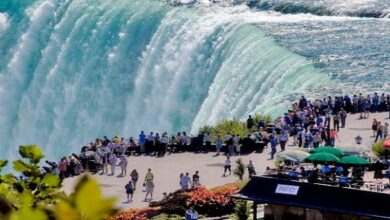Regional Geography and Regions

All of these various aspects of geography are brought together in the study of places and regions. For this reason, regional geography has been referred to as a virtuoso performance – it requires familiarity with the breadth of geography and competence in pulling together the diverse strands of knowledge to create a sense of place or regional character. The difference between a region and a place is dependent on scale and perception. A metropolitan area (comprising many cities that grow into one another) can be considered a place, at a national or international scale, or a region, at a local scale.
Core Area and Transition Zone
Most of the discussion of different regions in this text focuses on core area characteristics. The core area is the place where the shared characteristics that are used to define a region are most predominant. The core area of one region is distinctly different from the core area of a neighboring region. Transition zones are areas between two regions that share characteristics of both to some extent.
The characteristic(s) that defines each region are generally weaker in the transition zone. For example, the Mediterranean Sea clearly marks a distinct boundary between Europe and Africa, with almost no transition zone. You are either in Europe or you are on Africa. On the other hand, the boundary between Europe and Asia is a broad transition zone.
Though the Ural Mountains provide a convenient demarcation between the two continents, there is actually nothing especially noticeable about the Urals that separates the European physical and cultural realm from that of Asia. Similarly, the division between the United States South, the United States Midwest, and the United States Great Plains subregions is not easily defined. The state of Missouri, for example, is included in the south by some authors, although it could justifiably be included in the Midwest or the Great Plains because it shares core area characteristics with all three of these regions.
Homogeneous Regions
Homogeneous regions contain a common characteristic that is found throughout an area an equal degree. Island nations, such as Japan, tend to be more homogeneous than continent-based nations, though exceptions exist. The common characteristic may be one or a group of characteristics. A political entity, such as a country or state, which by definition encompasses its own citizens within its boundaries, is a homogeneous region. Also known as uniform and formal regions, homogeneous regions have more clearly defined boundaries (i.e., more narrow transition zones) than do nodal regions.
Nodal Regions
Also known as functional and focal regions, nodal regions have a central point at which the characteristic defining the region is most predominant. The farther away from this central point, the less predominant is the characteristic. A city’s area of economic and social influence is usually nodal. The farther one moves away from a major metropolitan city, such as Sydney, Australia, the less is its economic influence, until one moves into the influence area of another major city, such as Melbourne, Australia. The area within the sphere of influence of a nodal center is known as its hinterland or periphery. Nodal regions have well-defined core areas and poorly defined boundaries, with broad transition zones





